Budapest, for the first time visitor, reveals itself as an intriguing enigma from the very first moment. The majesty of the Danube, the elegant bridges linking Buda and Pest, everything is undeniably captivating. However, as we begin to explore, a curious duality emerges, a whisper of a not-so distant past that intertwines with the present. One senses it in the imposing architecture that suggests a Soviet influence, especially on the Buda bank, and then in the unexpected appearance of monuments dedicated to U.S. presidents. This initial contradiction awakens a desire to understand the history behind these seemingly disparate elements. The initial visual juxtaposition between the grandiose, possibly older architecture and the visitor’s perception of Soviet-style buildings generates immediate curiosity. Moreover, the presence of American monuments in a once-communist capital represents a significant and potentially startling contrast, immediately underscoring the city’s complex history and transition.
Influence of communism in the architecture of Budapest:
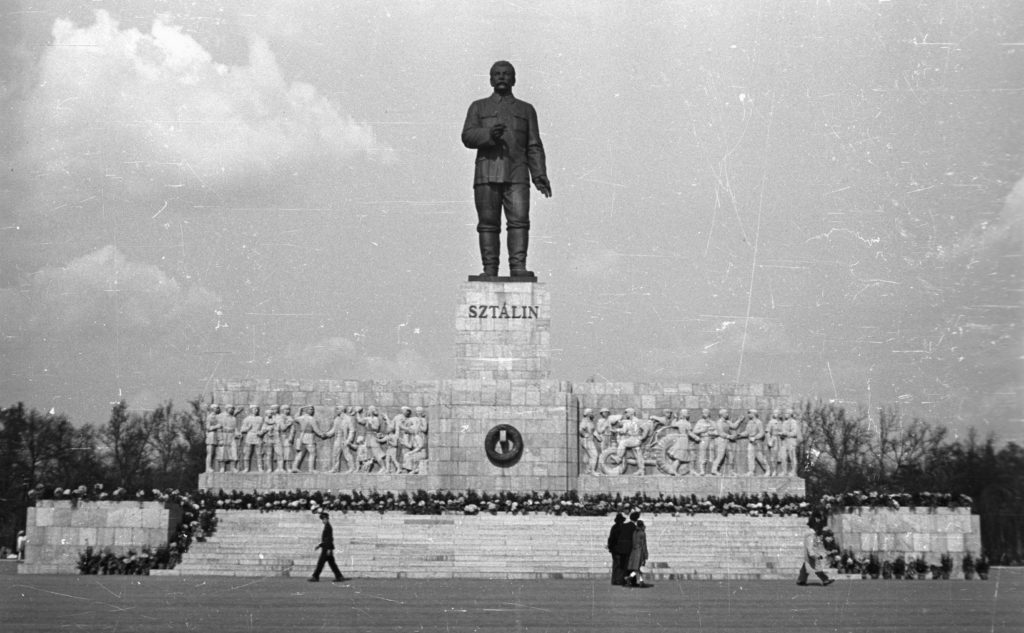
Venturing into Buda, one cannot help but notice buildings that seem to evoke a Soviet architectural aesthetic. While Buda boasts the historic Buda Castle and charming baroque houses in Óbuda, a closer look reveals the impact of the post World War II era and subsequent communist regime. The neo-baroque style Royal Castle, although initially built between 1749 and 1769, suffered severe damage during the siege of Budapest in World War II and was rebuilt in a simplified baroque style during the era of state communism. This simplification, driven by state control over production and distribution, represents an early influence of the communist regime on the urban landscape. Later, between 1951 and 1953, the Communist Party explicitly imposed the style of “socialist realism,” directly following Soviet models. Although specific examples in Buda are not explicitly detailed in the fragments, this period undoubtedly left its mark on some structures. The direct imposition of “socialist realism” architecture based on Soviet models during the early 1950s signified a deliberate attempt to align Budapest’s urban landscape with communist ideology.
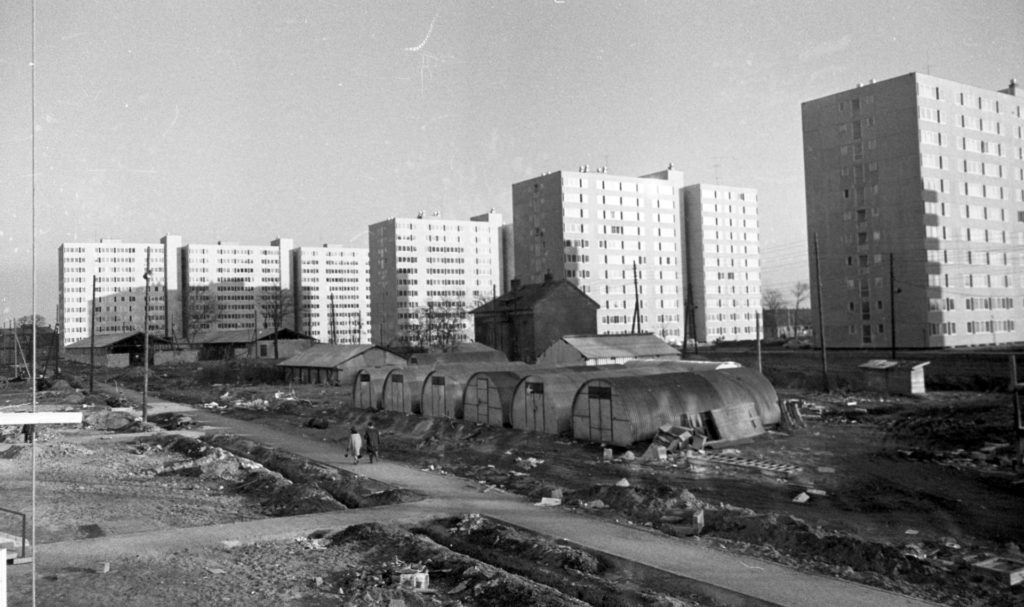
The 1960s saw the rise of prefabricated concrete “Panelház” (panel houses), built rapidly to address the housing shortage. While fragments suggest that they are most prominent away from the city center, the large scale of this construction probably means that some examples, though less imposing, may be present on the outskirts of Buda or in less central areas. These structures, often gray and devoid of ornamentation, contrast sharply with pre-war architectural styles. The “Panelház” represents a significant shift in architectural philosophy, prioritizing functionality and speed of construction over aesthetic considerations, a hallmark of the Soviet-era approach to urban planning. Even inside Buda Castle, the interior now features a Soviet-style element: red marble panels, the result of post-World War II reconstruction. This subtle detail is a reminder of the pervasive influence of the Soviet era. The Soviet-style interior elements within Buda Castle, a historical landmark, highlight the depth of the impact of the communist regime, extending even to the interiors of pre-existing structures. The architectural history of Budapest, including in Buda, reveals layers of influence, from the initial aspirations of a “bourgeois city” to the impact of Italian rationalism and a “tamed” modernism in the pre-war period, followed by the distinct styles imposed and influenced by the Soviet regime.
American monuments in Budapest:

Perhaps one of the most striking juxtapositions to a newcomer is the presence of monuments dedicated to American presidents in a city that once stood behind the Iron Curtain (the political, ideological, and in some cases physical border between Western Europe (capitalist bloc) and Eastern Europe (communist bloc) after World War II). These monuments are not just random additions to the urban landscape; they tell a story of shifting alliances and the symbolic adoption of new ideals. A statue of George Washington, the “Father of American Democracy ,” has stood in Budapest’s City Park since 1906. This monument was erected as a sign of unity between the United States and Hungary, conceived by Hungarian-American leaders who saw parallels between the American and Hungarian struggles for democracy. September 16 even became known as George Washington Day in Hungary. The early establishment of the George Washington statue highlights an enduring connection, though sometimes overshadowed by later events, and a shared aspiration for democracy between Hungary and the United States.
In Freedom Square, a prominent statue of Ronald Reagan commemorates his role in ending the Cold War and Soviet control over Hungary. Unveiled in 2011, the statue faces the U.S. Embassy and, notably, the Soviet Soldiers Memorial, creating a powerful visual dialogue. Hungarians deeply appreciate Reagan’s firm stance against the Soviet Union, which they credit with contributing to the eventual collapse of communism. The placement of the Reagan statue directly in front of both the U.S. Embassy and the Soviet Soldiers’ Monument in Freedom Square is a deliberate act of symbolic representation, highlighting Hungary’s shift from Soviet influence toward Western alignment.
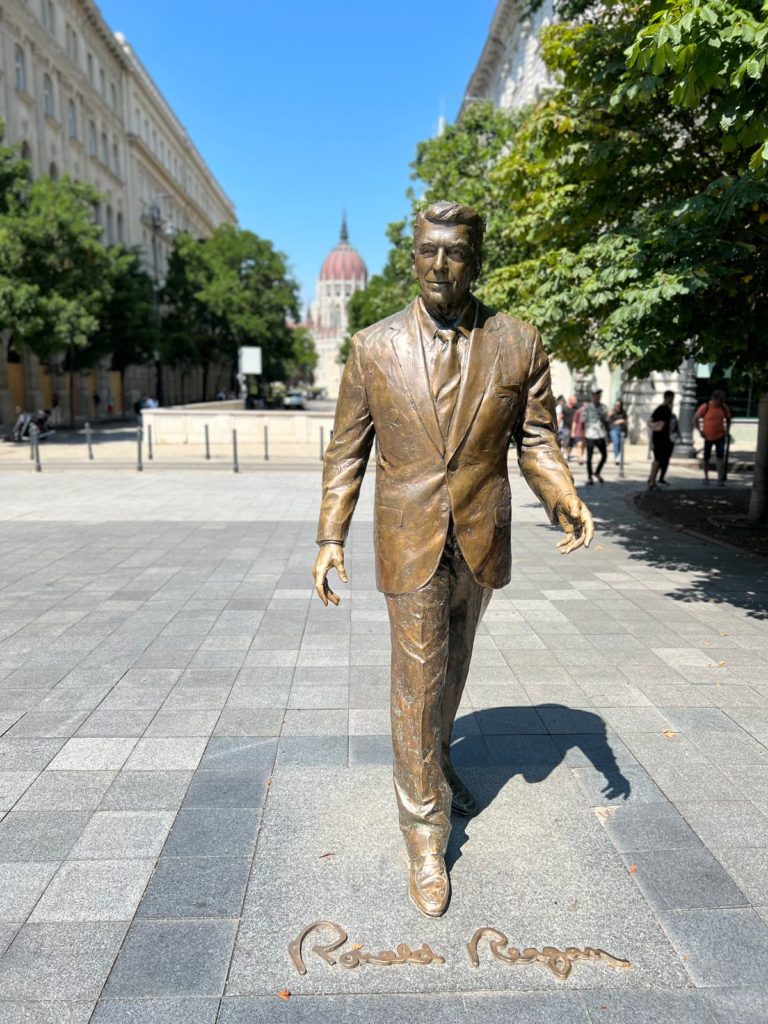
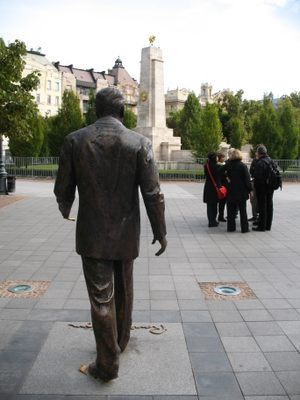
Liberty Square also features a statue of President George H.W. Bush, erected in 2020 in collaboration with the U.S. Embassy. Bush, erected in 2020 in collaboration with the U.S. Embassy. This statue honors his 1989 “From the Heart” speech, a pivotal moment in which he expressed strong support for Hungary’s transition to democracy and offered his cooperation. His visit was the first by a sitting U.S. president to Hungary and symbolized the country’s rapprochement with the West. The memorial to George H.W. Bush signifies the strengthening of U.S.-Hungarian relations in the post-communist era and acknowledges U.S. support during Hungary’s critical transition to democracy. While not a president, the monument to U.S. General Harry Hill Bandholtz in Freedom Square is another example of an American presence with historical significance. Bandholtz is honored for preventing Romanian troops from looting the Hungarian National Museum in 1919 after WWI. His statue remained intact even during World War II, highlighting the respect he earned. The inclusion of the Bandholtz monument underscores a history of U.S. support for Hungarian cultural heritage that predates the Communist era and demonstrates a common thread of positive bilateral relations despite political changes.
The presence of these American figures, particularly Reagan and Bush, in Freedom Square, juxtaposed with the Soviet monument, visually narrates Hungary’s journey from Soviet influence to the adoption of Western democratic values.
Liberty Square as a historical microcosm:
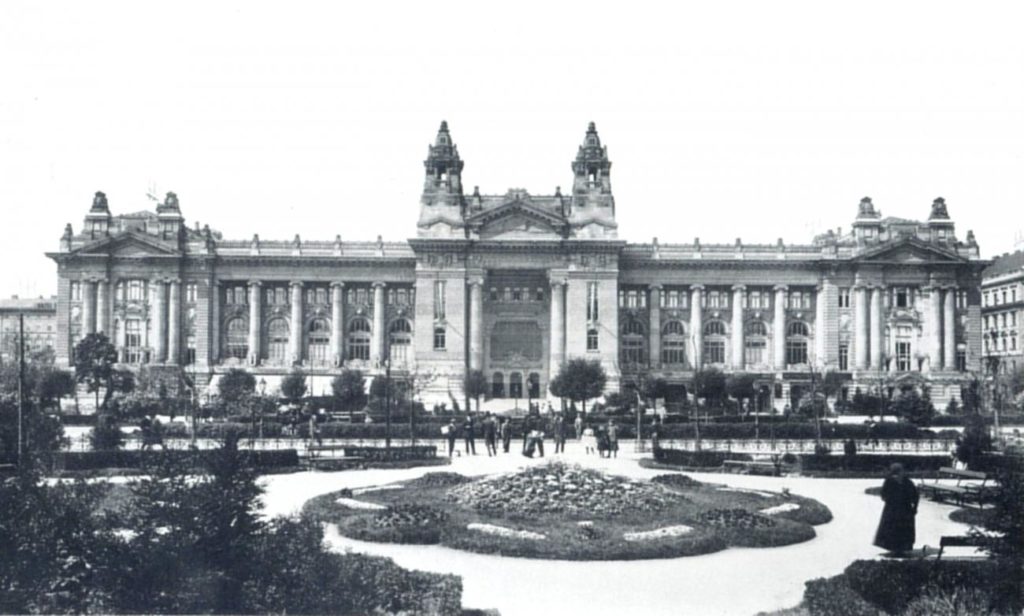
Freedom Square is a place where contradictions are particularly evident. In fact, this square serves as a microcosm of Budapest’s complex history, where remnants of different eras stand side by side. On the west side of Freedom Square stands the impressive building that once housed the Budapest Stock Exchange. Established in 1864, it moved to Freedom Square in 1905 and operated until the Soviets closed it in 1948. This neoclassical building, later used as the headquarters of Hungarian Television, is a tangible link to Budapest’s pre-Communist capitalist past and its role as an important economic center in Europe. The history of the Budapest Stock Exchange building, from its establishment as a symbol of capitalism to its closure under the Soviet regime and subsequent reuse, reflects the broader political and economic changes in Hungary.
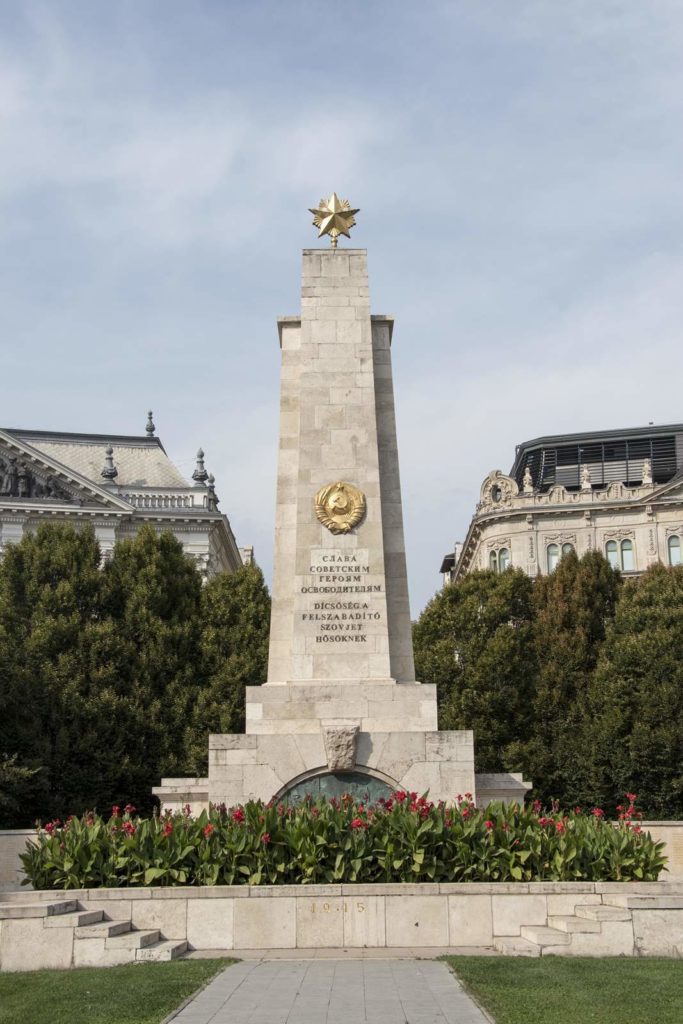
Dominating one end of the square is the Soviet Soldiers’ Monument, a white obelisk with the communist hammer and sickle, erected to commemorate the Soviet soldiers who died liberating Budapest from Nazi occupation in World War II. While initially seen as a symbol of liberation, it later became a reminder of the Soviet occupation for many Hungarians. Its prominent presence in the square, especially in the context of American monuments, highlights the complex and often conflicting historical narratives within the city. The continued presence of the Soviet Soldiers’ Monument in Freedom Square, despite the erection of monuments to American presidents, signifies a complex relationship to the past, acknowledging the Soviet role in liberation while acknowledging the subsequent occupation. Freedom Square also houses the U.S. Embassy, the Hungarian National Bank (a symbol of modern Hungarian capitalism) and several other monuments, including one to the victims of the German occupation. This mix of diplomatic, financial and commemorative functions further underscores the square’s role as a central point where different historical and political forces converge. The concentration of various institutions and monuments in Freedom Square makes it a powerful symbol of Budapest’s multifaceted identity, reflecting its past struggles, present realities and future aspirations. The square itself was built on the site of a former Austrian prison-barracks, a place of repression during the Hungarian struggle for independence. This history adds another layer to the square’s significance as a place that has witnessed various forms of political power and resistance. The very ground on which Freedom Square sits has a history of political significance, from imperial repression to communist influence and f inally to the adoption of democratic values, making it a truly layered historical site.
Transformation of the city after the fall of communism:
The interplay between Budapest’s communist past and capitalist present extends beyond the specific examples mentioned so far. A deeper exploration of the city reveals more instances of this fascinating duality. Many buildings constructed during the communist era have found new life in the capitalist economy. The House of Terror, once the headquarters of the communist secret police (ÁVH), is now a museum documenting the horrors of the Nazi and communist regimes. This transformation signifies a confrontation with the past and its integration into the present narrative. Similarly, the former Stock Exchange building on Freedom Square was reused as the headquarters of Hungarian Television under the communist regime. The reuse of buildings that once served as symbols of oppression or control under the communist regime in museums or commercial spaces in the capitalist era reflects a social reflection on the past and its transformation into a tool for education or economic activity.
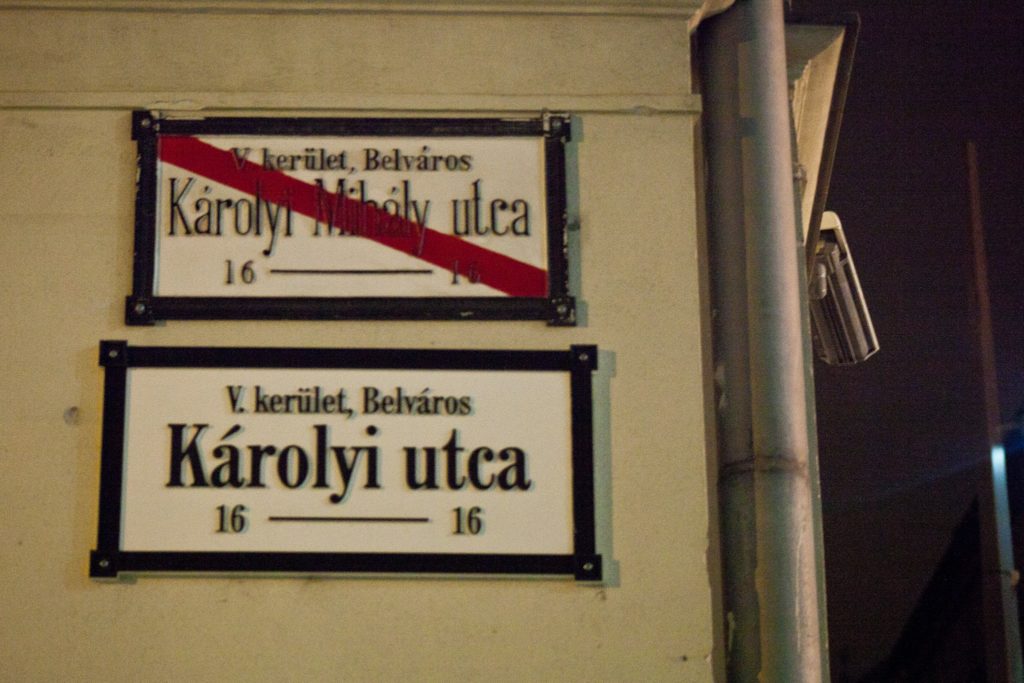
Street names in Budapest have also undergone significant changes since the fall of communism. Many streets that were named after communist figures or events have regained their pre-war names or have been renamed after important figures in Hungarian history or culture. This process of renaming is a symbolic act of breaking with the communist past and reaffirming a new national identity. However, sometimes you can still see remnants of the old names, with old signs crossed out over the new ones. The renaming of streets is a deliberate effort to reshape the symbolic landscape of the city, erasing traces of communist ideology and replacing them with narratives that align with the new political order. The occasional visibility of old names serves as a subtle reminder of this transition.
Memento Park, located on the outskirts of the city, is an open-air museum that houses the monumental statues and sculpted plaques of Hungary’s communist period. This park serves as a way to preserve these relics of a bygone era, while at the same time distancing them from the city center, allowing one to reflect on the past from a new perspective. The gift store at Memento Park even sells kitschy items from the communist era, highlighting a shift from ideological reverence to historical curiosity and even ironic appreciation. Memento Park represents a unique approach to dealing with the physical remnants of communism, preserving them in a designated space that allows for historical reflection and even a degree of commodification, rather than outright destruction. The fragments also mention a recent effort to restore Budapest’s classical architecture, much of which was damaged or dismantled during World War II and the communist era. This “National Hauszmann Program” aims to reconstruct historic buildings in the Buda Castle district, signifying a renewed focus on pre-Communist heritage and a desire to rectify the architectural impact of the Soviet period. Current restoration efforts focused on classical pre-Communist architecture in Buda indicate a contemporary desire to reclaim and celebrate a historical narrative that predates Soviet influence, possibly minimizing or correcting the architectural legacy of the Communist era.
Conclusion
As my exploration of Budapest draws to a close, the initial sense of contradiction has evolved into a deeper appreciation of the city’s unique character. The remnants of the communist era, though at times austere and imposing, serve as a powerful reminder of a significant period in Hungary’s history. Juxtaposed with the grandeur of its imperial past and the visible symbols of its present capitalist reality, these contrasts create a dynamic and compelling cityscape. The presence of American monuments in Freedom Square, once a symbol of Soviet power, speaks volumes about the country’s journey and its current alliances. Budapest is not a city that tries to erase its past; instead, it displays its history, with all its complexities and contradictions, openly on its streets. This duality is not a source of conflict, but rather a testament to Budapest’s resilience and its ability to forge a unique identity from a tapestry of different eras and ideologies. To a newcomer, this makes Budapest not only a beautiful city, but a fascinating history etched in stone and steel. Budapest’s identity is intrinsically linked to its historical duality, where the remnants of communism and the embrace of capitalism coexist, creating a unique and compelling character that is both historically rich and forward-looking.


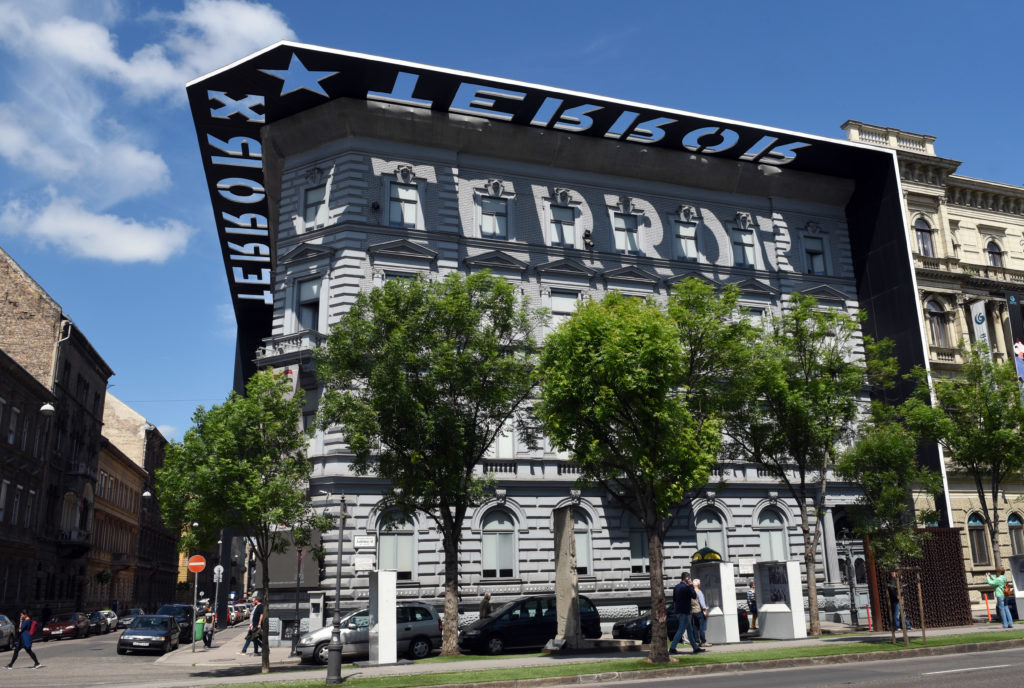
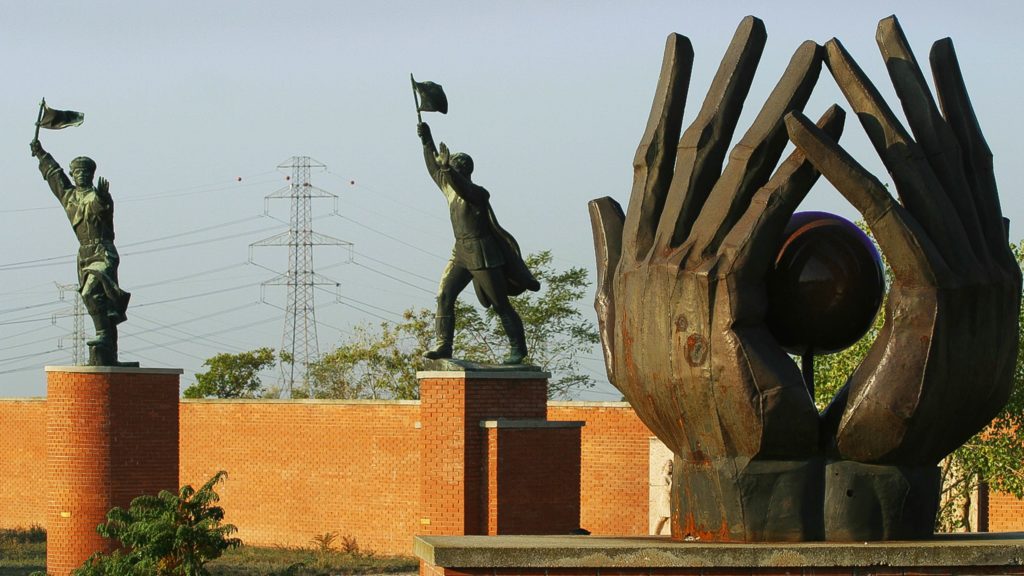
Comments are closed.